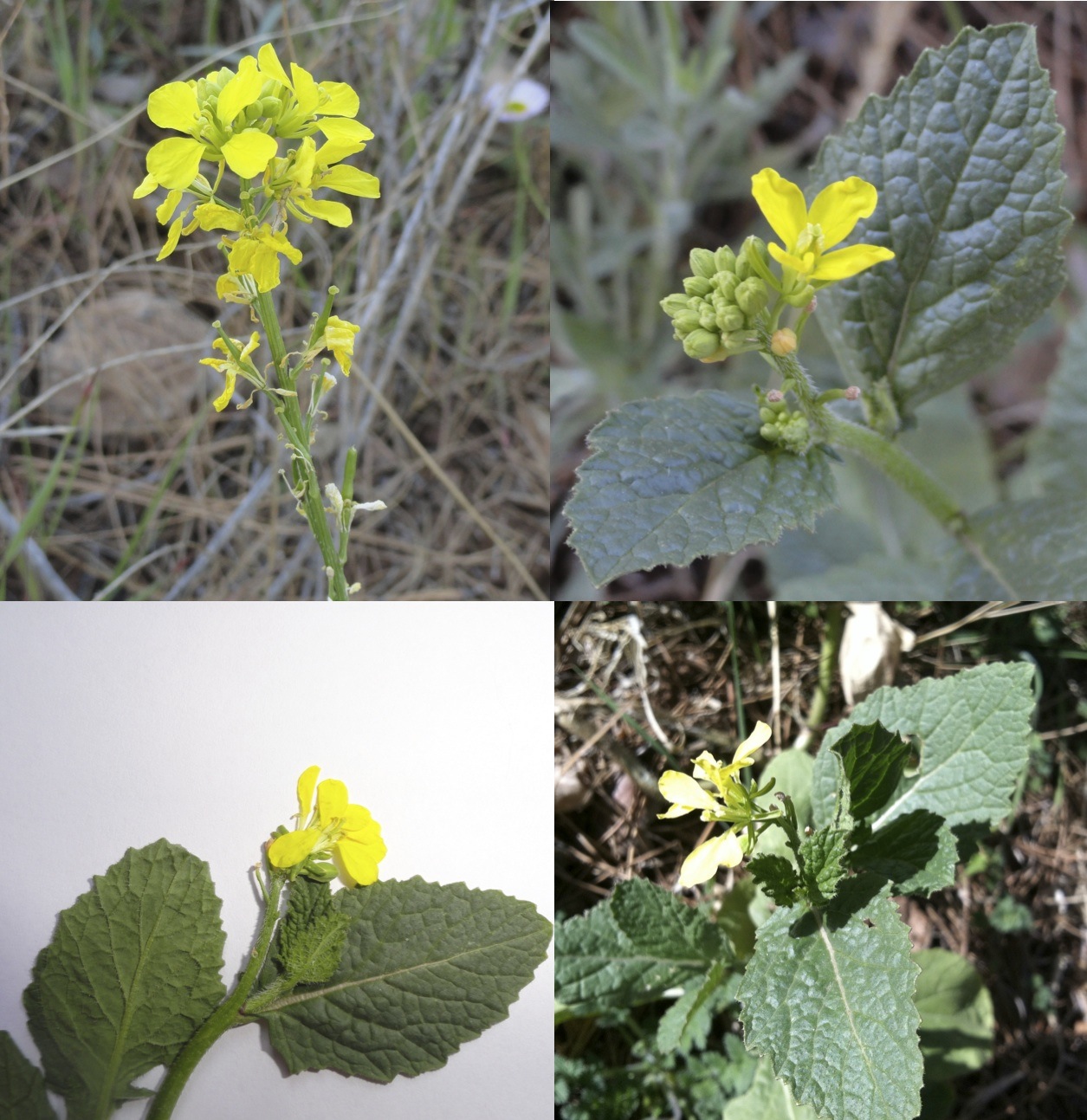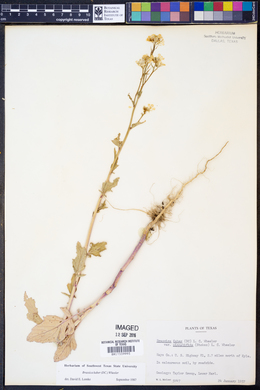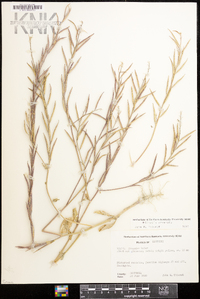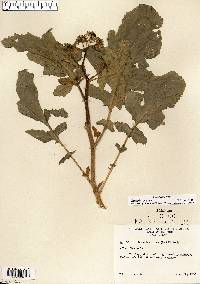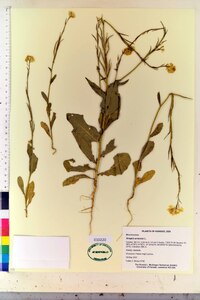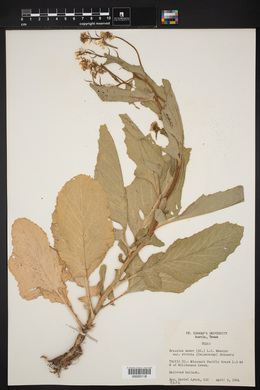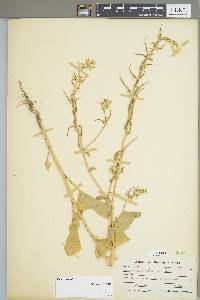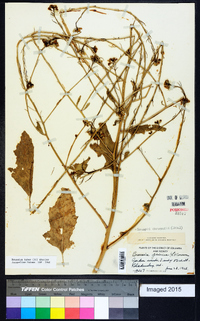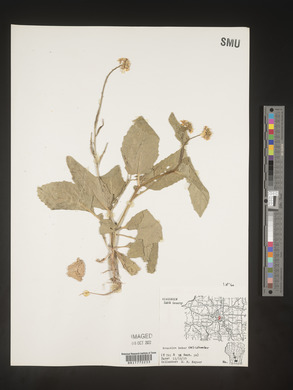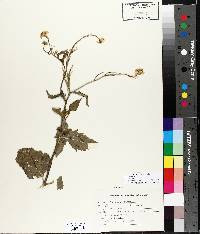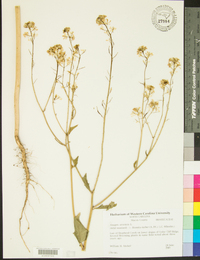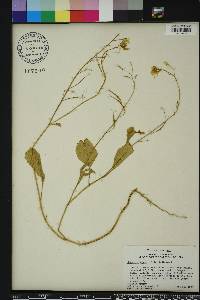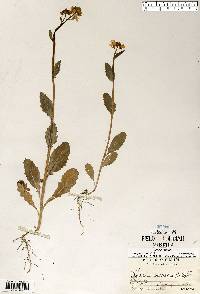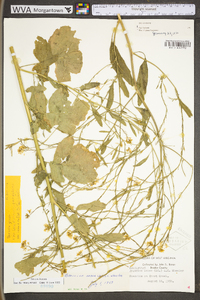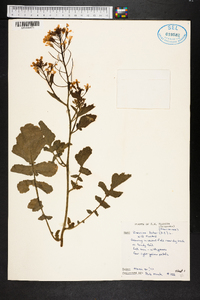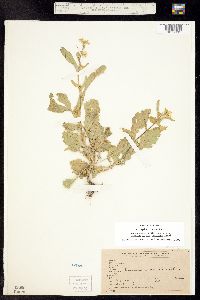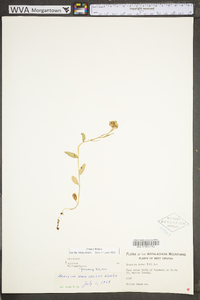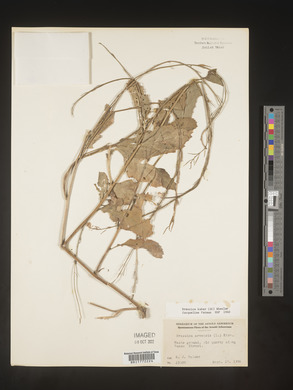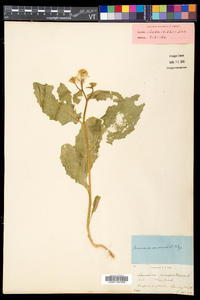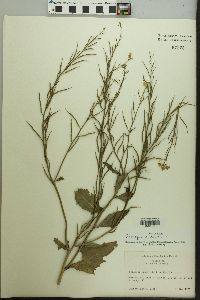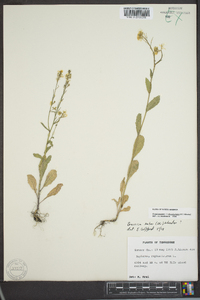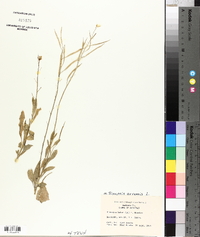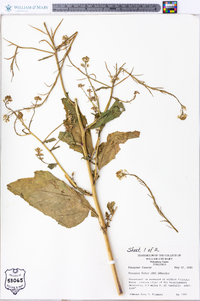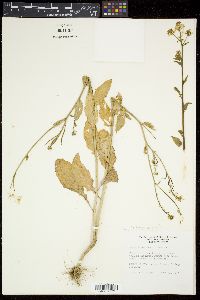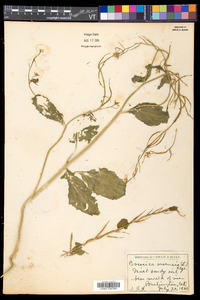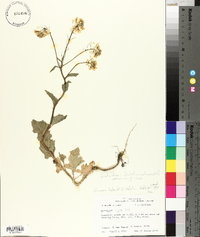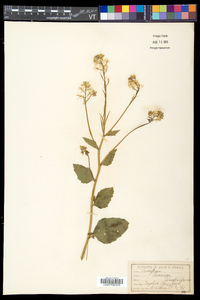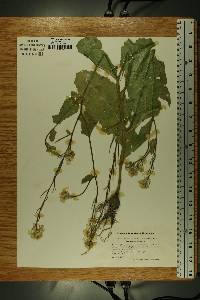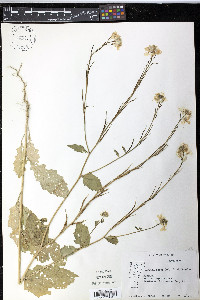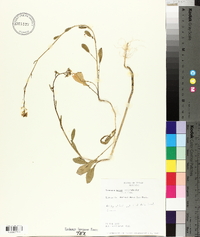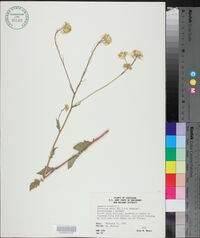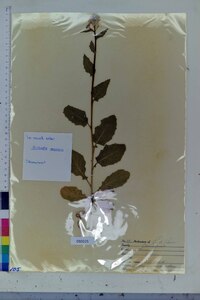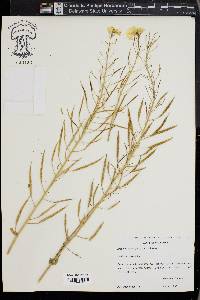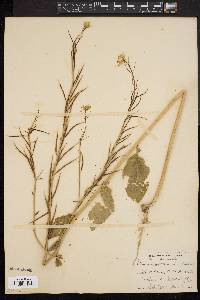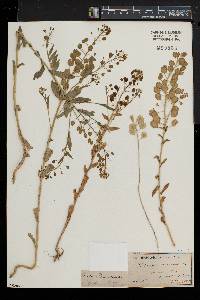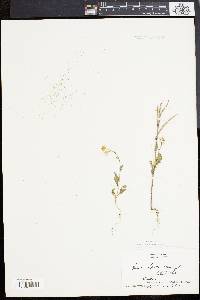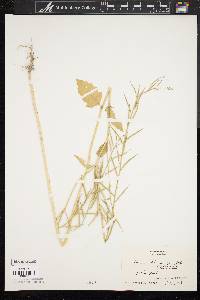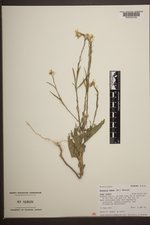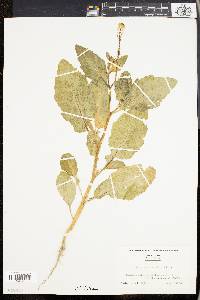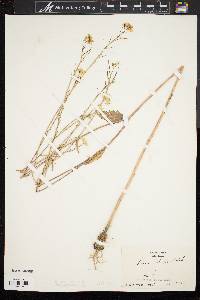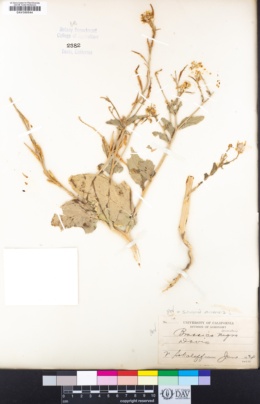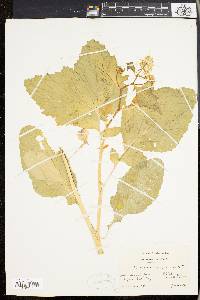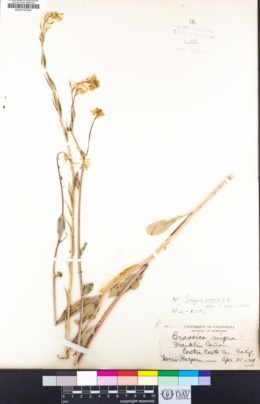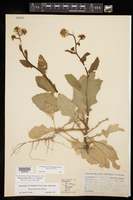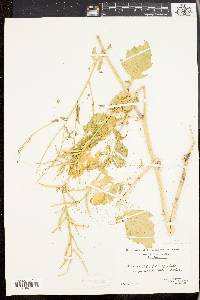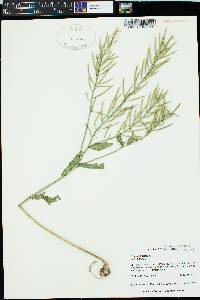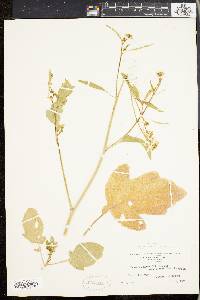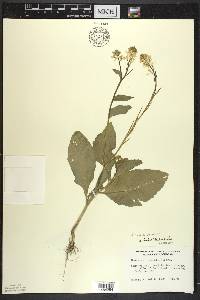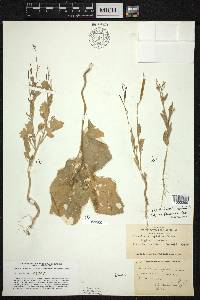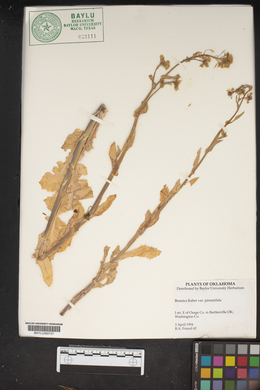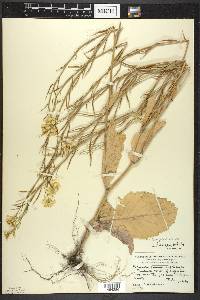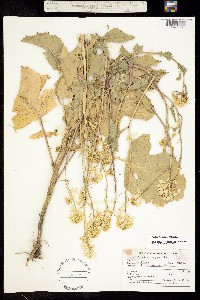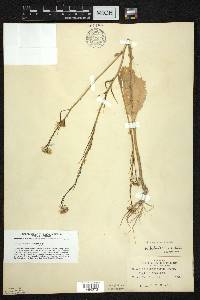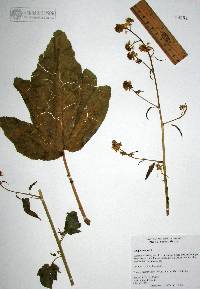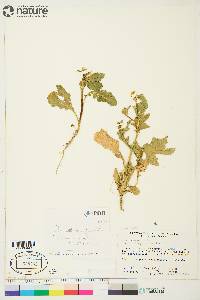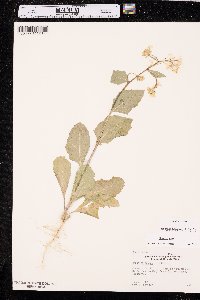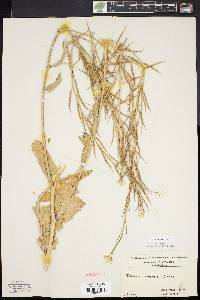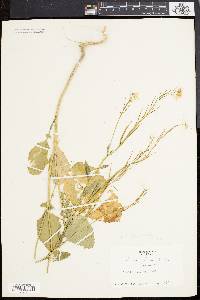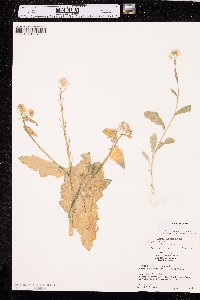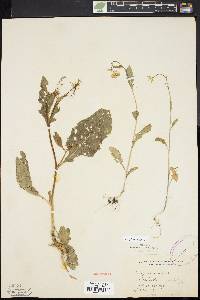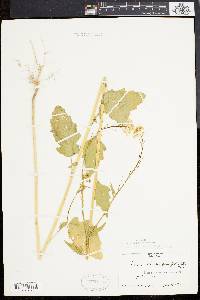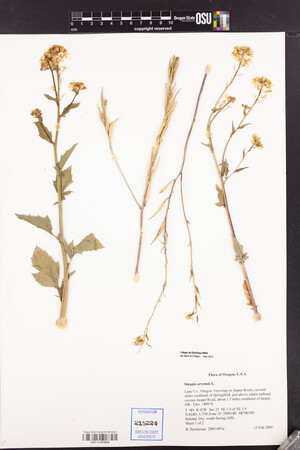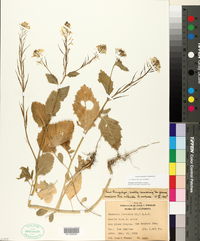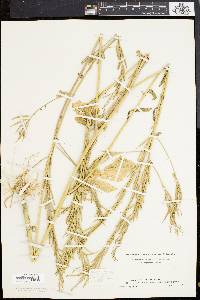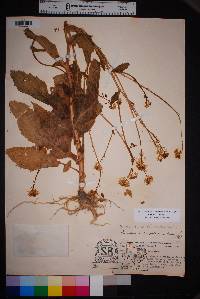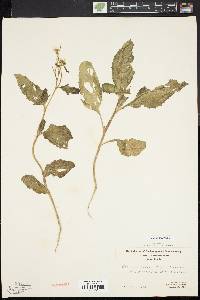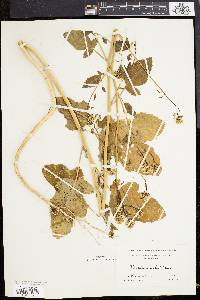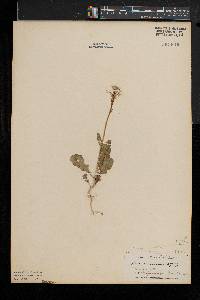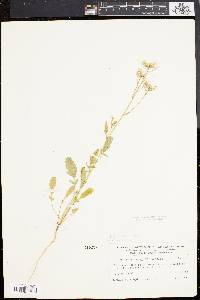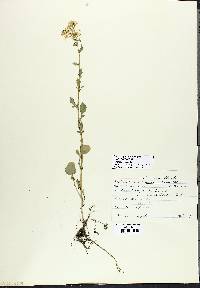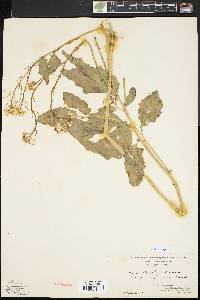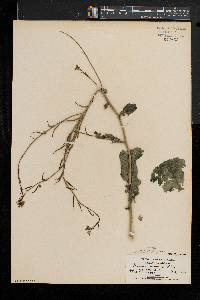
|
|
|
|
Family: Brassicaceae
Corn-Mustard, more...charlock mustard, canola, charlock, corn mustard, kaber mustard, rapeseed, wild mustard, wild mustard
[Brassica arvensis Rabenh., non L., moreBrassica kaber (DC.) L.C. Wheeler, Brassica kaber var. pinnatifida (Stokes) L.C. Wheeler, Brassica kaber var. schkuhriana (Reichenb.) L.C. Wheeler, Brassica sinapistrum Boiss., Sinapis arvensis subsp. arvensis , Sinapis arvensis var. orientalis (L.) Farw., Sinapis arvensis var. schkuhriana (Rchb.) Hagenb.] |
Plants hirsute, hispid, or glabrous. Stems unbranched or branched, (0.5-)2-10(-21) dm, (often hirsute or hispid, sometimes glabrous, trichomes retrorse or spreading). Basal leaves: (proximal) petiole 1-4(-7) cm; blade obovate, oblong, or lanceolate, (3-)4-18(-25) cm × 15-50(-70) mm, margins lyrate, pinnatifid, or, sometimes, undivided; lobes 1-4 each side, margins of terminal and smaller lateral lobes coarsely toothed, (surfaces sparsely pubescent). Cauline leaves usually shortly petiolate, rarely subsessile; blade margins often not divided, coarsely toothed. Fruiting pedicels ascending or suberect, (2-)3-7 mm. Flowers: sepals (yellow or green), (4.5-)5-6(-7) × 1-1.8 mm; petals bright yellow, (8-)9-12(-17) × (3-)4-6(-7.5) mm; filaments (3-)4-6 mm; anthers 1.2-1.5 mm. Fruits linear, (1.5-)2-4.5(-5.7) cm × (1.5-)2.5-3.5 (-4) mm; valvular segment terete, (0.6-)1.2-3.5(-4.3) cm, (2-)4-8(-12)-seeded per locule; terminal segment (straight or upcurved), conical or subulate, terete, (0.7-) 1-1.6 cm, shorter than valves, seedless or 1-seeded; valves glabrous or pubescent, trichomes of 1 type. Seeds reddish brown to black, (1-)1.5-2 mm diam. 2n = 18. Flowering Mar-Oct. Roadsides, waste places, disturbed areas, fields, grain fields, orchards; 0-1800 m; introduced; Greenland; St. Pierre and Miquelon; Alta., B.C., Man., N.B., Nfld. and Labr., N.W.T., N.S., Ont., P.E.I., Que., Sask., Yukon; Alaska, Ariz., Ark., Calif., Colo., Conn., Del., D.C., Fla., Ga., Idaho, Ill., Ind., Iowa, Kans., Ky., La., Maine, Md., Mass., Mich., Minn., Miss., Mo., Mont., Nebr., Nev., N.H., N.J., N.Mex., N.Y., N.C., N.Dak., Ohio, Okla., Oreg., Pa., R.I., S.C., S.Dak., Tenn., Tex., Utah, Vt., Va., Wash., W.Va., Wis., Wyo.; Eurasia; introduced also in Mexico, West Indies, Central America, South America (Argentina), nw, s Africa, Atlantic Islands, Australia. Infraspecific taxa have been recognized in Sinapis arvensis on the basis of minor variation in fruit and basal leaf morphology, but the species is extremely variable, and none of the variants is recognized here. Sinapis arvensis is one of the most widespread and abundant weeds of cultivated grain fields in North America, causing crop losses and acting as host for viruses and fungi that also attack some cruciferous vegetable crops (G. A. Mulligan and L. G. Bailey 1975; I. A. Al-Shehbaz 1985; R. C. Rollins and Al-Shehbaz 1986). It is generally considered a native of Eurasia and is thought to have been introduced into the New World by European settlers about 400 years ago. Recent archaeological and ethnobotanical studies (H. A. Jacobson et al. 1988) indicate that it (as Brassica kaber) grew in the northeastern United States as early as 8000 years ago and suggest that it originally had a semi-circumboreal distribution.
Annual herb 20 cm to 0.8 m tall Stem: usually rough-hairy. Flowers: 1.5 cm wide, in branched clusters (racemes). Mature flower stalks ascending, 5 mm long. Petals four, yellow. Fruit: a long, narrow pod (silique), ascending, 1 - 2 cm long (without beak), 1.5 - 2.5 mm thick, linear, almost cylindrical, smooth or rarely bristly. Valves with three to five prominent veins. Beak half as long as the body, flattened, four-angled. Seeds seven to thirteen, 1 - 1.5 mm long. Lower leaves: alternate, reverse egg-shaped, coarsely toothed or sometimes lobed, usually rough-hairy. Upper leaves: alternate, progressively reduced, reverse egg-shaped, toothed, usually rough-hairy. Similar species: No information at this time. Flowering: late May to early October Habitat and ecology: An abundant weed of grain fields, waste ground, and disturbed areas. Occurence in the Chicago region: native Etymology: Sinapis comes from the Greek word sinapi, meaning mustard. Arvensis means "of farmed or cultivated land." Author: The Morton Arboretum Rough-hairy to subglabrous annual 2-8 dm; lvs obovate, the lower coarsely toothed or sometimes lobed, the upper progressively reduced, merely toothed; fls 1.5 cm wide; mature pedicels ascending, 5 mm; frs ascending, linear, subterete, the body 1-2 cm נ1.5-2.5 mm, smooth or rarely bristly; beak flattened-quadrangular, commonly half as long as the body; seeds 7-13, smooth, 1-1.5 mm; 2n=18. A European weed, now widespread in fields, gardens, and waste places in the U.S. May-July. (Brassica arvensis; B. kaber) Gleason, Henry A. & Cronquist, Arthur J. 1991. Manual of vascular plants of northeastern United States and adjacent Canada. lxxv + 910 pp. ©The New York Botanical Garden. All rights reserved. Used by permission. From Flora of Indiana (1940) by Charles C. Deam This weed has been reported from 13 counties. It is found not only in waste places and along lines of transportation but also in cultivated and fallow fields. …… Indiana Coefficient of Conservatism: C = null, non-native Wetland Indicator Status: N/A |

